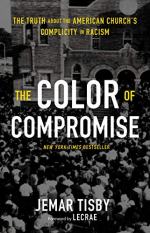|
This section contains 1,178 words (approx. 3 pages at 400 words per page) |

|
Summary
In Chapter 9, "Organizing the Religious Right at the End of the Twentieth Century," Tisby details the rise of the Religious Right. The conservative movement gained momentum under Presidents Richard Nixon, Jimmy Carter, and Ronald Reagan.
These leaders' identification with the Christian faith allowed them to establish and enforce ultra-conservative policies. The Republican party became nearly synonymous with the theology of conservative Christians. "The combined electoral force" of evangelicals, fundamentalists, Pentecostals, and Catholics, "became a coveted vote for Republican politicians to pursue" (156). So when civil rights movements arose, Nixon, for example, denounced the protests as anarchy. The majority silence of Christian conservatives further encouraged racial divides.
The Internal Revenue Service (IRS) also motivated the Religious Right. In 1971, the IRS issued an order that any school who discriminated on the basis of race could not be considered a charitable institution. Bob Jones University is...
(read more from the Chapters 9 - Conclusion Summary)
|
This section contains 1,178 words (approx. 3 pages at 400 words per page) |

|




